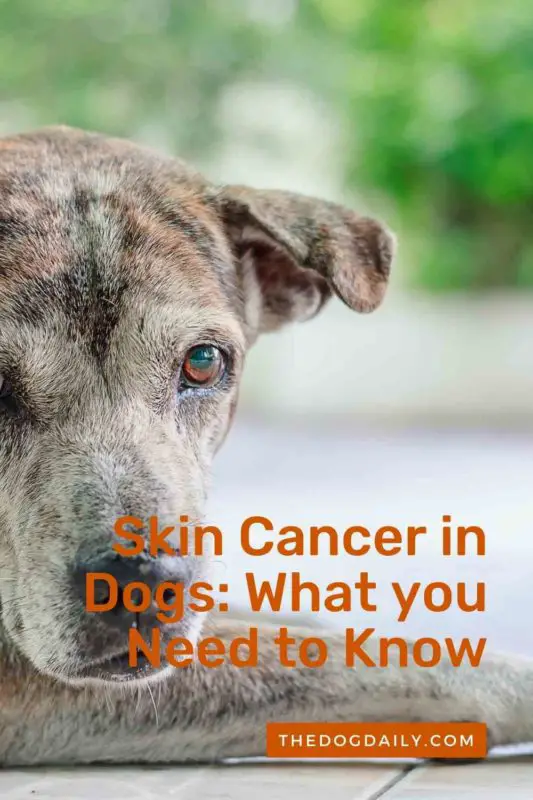How Common is Skin Cancer in Dogs?
Just because your dog has fur doesn’t mean it is immune to skin diseases, such as cancer. To get the latest information on this pervasive disease, we contacted three top veterinarians who specialize in canine cancer. Here are their answers to your most pressing questions.
Skin cancer is the most prevalent type of cancer found in dogs, says Kevin A. Hahn, DVM, Ph.D., director of oncology services at Gulf Coast Veterinary Specialists in Houston, Texas. Nearly one-third of all dogs diagnosed with cancer have a tumor that originated on the skin or from the skin’s tissues.
What are the Most Common Forms of Skin Cancer in Dogs?
Dogs tend to be diagnosed with squamous cell carcinoma, basal cell carcinoma, or mast cell tumors, says Dr. Hahn. Squamous cells make up most of the skin, so squamous cell carcinoma refers to these cells’ abnormal growth. Basal cells line the deepest layer of the skin, so that’s what is affected with basal cell carcinoma. Mast cells are a bit different because they can be found in other parts of the body. They are specialized cells involved with your dog’s immune system.
If a Dog Spends a lot of Time in the Sun, is it More Vulnerable to Skin Cancer?
Of all the skin cancers, squamous cell carcinoma and basal cell carcinoma are often due to sun exposure. Mast cell tumors usually tend to occur in specific breeds, says Dr. Hahn.
Is it True That Certain Breeds Get Skin Cancer More Than Others?
Yes. Skin cancer is one of the most common tumors in dogs with shorter hair, says Gregory K. Ogilvie, DVM, who specializes in internal medicine and oncology at California Veterinary Specialists Angel Care Cancer Center San Marcos, California. Also, dogs with thin hair and fair skin are at greater risk for squamous cell carcinomas. Boxers, Boston Terriers, and Pugs seem to be more susceptible to mast cell tumors of the skin, while Poodles, Cocker Spaniels, and other breeds can suffer from different skin cancer types.
What’s the Best Thing an Owner Can do to Protect a Dog from Skin Cancer?
Pay attention, says Michael R. Moyer, DVM, director of shelter animal medicine at the University of Pennsylvania School of Veterinary Medicine in Philadelphia. Routinely check your dog’s skin everywhere, and not just in the areas you usually pet. Check sites such as under the dog’s belly, on the bottom of its paws, in between the footpads, and so on.
What Should You Do If You’ve Found a Suspicious Lump on a Dog?
Take your dog to a veterinarian right away for an evaluation, suggests Dr. Moyer. Not all lumps are cancerous, but your doctor might suggest medical procedures such as a fine needle aspirate (a type of minimally invasive biopsy), a biopsy sample, or a complete removal to be safe. Additionally, learning whether the tumor might have spread is vital in cases where malignancy is suspected. Your veterinarian may recommend further tests such as X-rays, blood tests, and ultrasound procedures.
Are There any Tips for Figuring out Which Lumps on Dogs are Benign and Which are More Serious?
Any lump or bump should be considered suspect, says Dr. Hahn. Sometimes cancer goes undetected because it can resemble other less-serious skin ailments. It may look round, smooth, and be slow-growing, like a wart. Or it could occur rapidly, compromising the health of the skin and looking like a nasty bug bite or wound. That’s why many veterinarians will say, “when in doubt, check it out.” The best approach is the active approach. If the cyst or mass changes in size or character (such as soft to hard), begins to bleed, or is painful to the pet, then your doctor will probably suggest surgery as a course of action for treatment.
Article written by Author: Lambeth Hochwald

